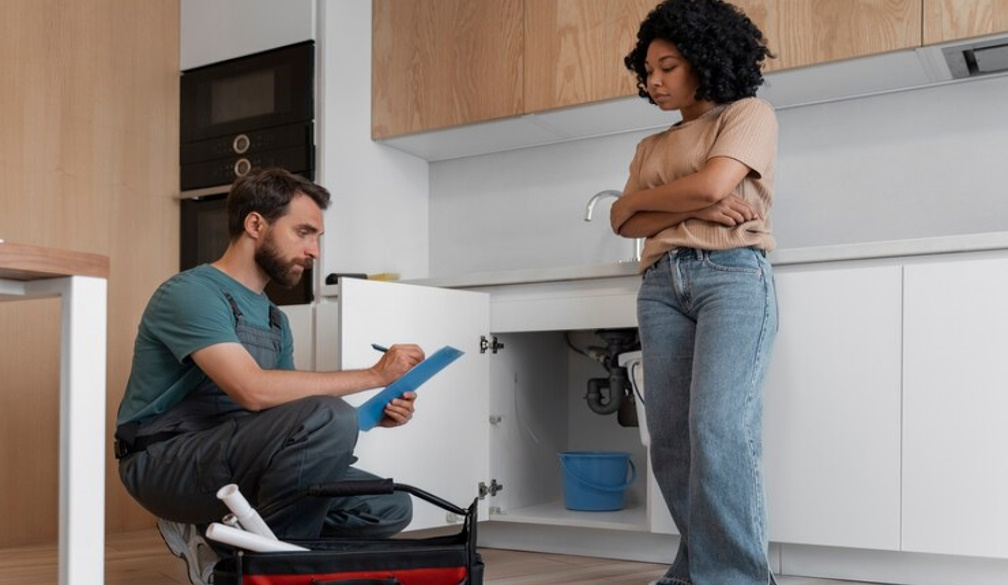What to Expect During a Plumbing Inspection

A plumbing inspection is an essential service that ensures your home’s plumbing system is functioning properly and free from hidden problems. Whether you're preparing to buy a new home, experiencing frequent plumbing issues, or simply want to ensure your system is in top shape, a professional plumber Central Coast can help identify potential issues, including blocked drains, leaks, or deteriorating pipes. Here’s what to expect during a plumbing inspection.
1. Initial Consultation and Inspection Agreement
The plumbing inspection process typically begins with a conversation between you and the plumber. They’ll ask questions about any specific concerns you might have, such as recurring clogs, water pressure problems, or leaks. If you’ve had issues with blocked drains or slow drainage in the past, make sure to mention these so the plumber can focus on the areas that need the most attention.
You’ll also discuss any areas of your plumbing system that you’d like the plumber to prioritize during the inspection. In some cases, the plumber may ask for access to your water meter, crawl spaces, or attic, where pipes are often hidden from view. Before the inspection starts, you’ll typically sign an agreement that outlines the scope of the inspection and its cost.
2. Visual Inspection of Plumbing Fixtures
Once the plumber arrives, they’ll begin by visually inspecting all visible plumbing fixtures throughout your home. This includes faucets, toilets, sinks, bathtubs, and any exposed pipes under sinks or in basements. The plumber will check for signs of wear, corrosion, or leaks in these areas. Any visible signs of damage—such as water stains, rust, or mold—can indicate plumbing issues that need attention.
For blocked drains, the plumber may test the drains and check for any slow drainage. In some cases, they might flush each toilet, run the sink taps, or run water in the shower to assess the drainage speed and identify areas where blockages or clogs may be occurring.
3. Drain Inspection and Camera Inspection for Blocked Drains
One of the most important parts of a plumbing inspection is checking for blockages or potential issues in the drainage system. For minor clogs, the plumber may use a plunger or drain snake to test the efficiency of your drains. For more severe or hidden blockages, they will often use specialized equipment, such as a drain camera, to inspect the inside of your pipes.
The camera inspection involves inserting a small, flexible camera into the drain lines. This camera sends real-time footage to a monitor, allowing the plumber to see if there are any obstructions, buildup, or damaged pipes deep within your system. If the plumber detects a blocked drains Central Coast or other problems in your pipes, they will provide recommendations for how to address the issue, which could include clearing the blockage or, in more severe cases, repairing or replacing sections of piping.
4. Pressure Testing and Leak Detection
During the inspection, the plumber may also perform pressure tests to assess the health of your pipes and identify any hidden leaks. If your water pressure is low, it could indicate a blockage, leak, or issue with your water supply line. By using a pressure gauge, the plumber can determine if there are any pressure inconsistencies in the system, which might point to a leak or pipe damage.
If leaks are suspected but not immediately visible, the plumber may use specialized tools such as an acoustic leak detector or infrared cameras to find hidden leaks within walls or floors. Catching leaks early can prevent expensive water damage and prevent further deterioration of your plumbing system.
5. Water Heater and Sewer Line Inspection
In some cases, the plumbing inspection may also include a check on your water heater and sewer line. The plumber will inspect the water heater for signs of wear, sediment buildup, or other issues that could affect its efficiency or longevity. If your home has a septic system, the plumber may also check the condition of the sewer line to ensure it’s not clogged or damaged.
6. Final Recommendations and Report
Once the inspection is complete, the plumber will provide you with a detailed report of their findings. If there are any issues—whether it’s blocked drains, leaks, or damaged pipes—they will explain the necessary repairs and offer an estimate. The plumber may also offer recommendations for routine maintenance, such as drain cleaning, to prevent future blockages or water flow issues.
If serious problems are detected, such as significant leaks or deteriorating pipes, the plumber may recommend immediate action to avoid further damage. For blocked drains, they might suggest a professional drain cleaning service to clear out any stubborn obstructions.
Conclusion
A plumbing inspection is an important part of homeownership and should be done regularly to avoid costly plumbing repairs. By having a professional plumber inspect your system, including checking for blocked drains, leaks, and pipe damage, you can ensure your plumbing is in good working order. Regular inspections can save you money in the long run by preventing major issues before they arise, so don’t hesitate to schedule an inspection if you have concerns about your plumbing system.

















